_poster.jpg)
"Caligari" is one of the most important films of all time, codifying Expressionism as a visual style of claustrophobia and nightmares. The most film's most distinctive effect was the use of elaborate and bizarre sets, backdrops and costumes which were entirely constructed on an indoor stage set by set designers from the Bauhaus theatre design school which included jagged and elongated walls and furniture. Windows were out of symmetry, doors hung jaggedly out of kilter, people perched precariously on chairs which leaned mantis-like over cramped desks. Stairways and causeways sprang out of nowhere stretching haphazardly into the shadows. Trees and lamp-posts made out of plywood loomed jaggedly overhead like spiderwebs. Harsh shadows were painted on the floor at random. The film was simply full of iconic horror imagry. The rickety merry-go-round at the fair, the arrogant town clerk perched at his desk like a decrepit vulture, the somnambulist Cesare (the great Conrad Viedt) sleeping in his coffin aboard Dr. Caligari's (Werner Krause) jack-in-the-box caravan, and Cesare's oddly elegant spider-like stalk across the maze of rooftop gables carrying the damsel in distress (Lil Dagover), Dagover's ghostly walk through the gardens. Caligari was one of the few films of which it can truely be said that there was never anything quite like it. Hugely influential on later Gothic horror, fantasy and film noir, not to mention music videos and perfume commercials. And yet for such an iconic film one has to wonder why there was no followup. Turns out that there was.
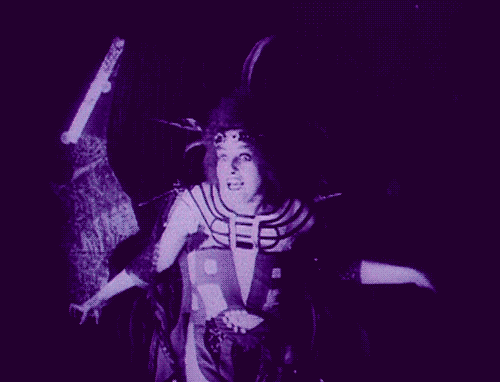
Much like Kubrick's "2001", "Caligari" was not only a ground breaker but a cul-de-sac. It's visual style was just too distinctive to imitate without looking like a carbon copy and the great German Expressionists like FW Murnau, Fritz Lang and Paul Wegener soon found other ways to achieve the nightmare effect they wanted, although echos can be found in Lang's versions of "Faust", Murnau's "Nosferatu" and Wegener's "Der Golem". The challenge of how to answer Caligari fell heaviest on it's director Robert Wiene. Actually Weine was thought of as a talented journeyman director who came from a theatre family rather than a full-fledged expressionist like Murnau, Lang or Wegener, or even his actors Veidt and Krause. His previous work from romantic melodramas to domestic comedies with no noteworthy style or flair. In fact many of the visual trademarks of "Caligari" were partly forced on Wiene by the low budget and short shooting schedule that he was saddled with in the economic crisis of post WW1 Germany. This meant he he had no choice but to shoot the entire film indoors in a converted warehouse using plywood stage sets. This made him open to experiment with the expressionists from the Bauhaus school which he might not have otherwise done. Wiene has come into some criticism from those who said that he did not really understand the genre he helped to launch and who resented the changes he was forced add to give the film a happy ending. He is most often dismissed as "over-rated". But it must be said that while he may have been a late convert he dove in with both feet. After "Caligari" his first followup was "Genuine; "Story Of A Vampire".
In 1921 the "vampire" in question was not a bloodsucking undead that we expect but a "vamp", a mysterious and exotic woman who seduces men and destroys men for the sheer joy of doing so. Genuine was the name of the vamp in question, a native girl in some Mid-Eastern slave market who is bought by a European tourist who keeps her captive in a glass birdcage until she lures another young man to kill the older man and release her. Upon which she proceeds to seduce and destroy various men until she meets her demise. And that's about it. The film was a collaboration between Carl Meyer, a respected Expressionist screen writer and painter and Bauhaus set designer Cesare Klein. Meyer would have many important films to his credit notably his later work with Murnau on "The Last Laugh" but the simplistic and plot of "Genuine" was not his best work, especially to modern eyes.
"GENUINE" (full film);
~~~~~~~~~~~~~~~~~~~~~~~~~~~~~~~~~~~~~~~~~~~~~~~~~~~~~~~~~~~~~~~~~~~~~~~~~~~~~~~~~~~~~~~ PLOT (SPOILER ALERT);
Cast;
Fern Andra ~ "Genuine"
Hans Heinz Von Twardowski ~ "Florian"
John Gottowt ~ "Guyard"
Louis Brody ~ "Manservant"
Harald Paulsen, Ernst Gronau ~ Roles unknown, presumably "Percy" and "Henry" or "The Barber"
Percy, a painter is dreaming of an exotic girl named Genuine whose life-size painting is on his library wall. As he sleeps the girl comes to life and steps out of the painting.
Genuine is a High Priestess of a tribe in the Mid-East who is captured when her tribe is attacked by a rival tribe and she is taken to a slave market. She is bought by Guyard, an bald old rich European wearing a long black jacket, white gloves and spats. He is warned that she is savage and dangerous. He buys her anyway and takes her to his mansion where he lives with an intimidating black manservant who wears a turban, Turkish pantaloons and a curved dagger. Guyard's mansion is decorated with sinister artwork including a skeleton grandfather clock. Guyard keeps Genuine captive in a giant glass birdcage where she longs for freedom.
Guyard has a barber visit him each day at noon to give him a shave while he dozes in his chair. The other villagers are suspicious of Guyard and ask The Judge to summon the Barber to explain what Guyard is up to in his mansion. The Barber must therefore send his nephew Percy to substitute for him at Guyard's the next day. Guyard gets a letter from his grandson, Percy, announcing that he will coming for a visit. The next day Florian arrives. he is a pale nervous youth wearing kneepants and effeminate clothes and hair. While he is giving Guyard a shave and Guyard dozes Genuine escapes and creeps into the room. She lures Percy into killing Guyard with his straight-razor. Guyard's manservant bursts in and draws his knife to attack Percy. However Genuine has already told Percy that Guyard had been controlling the Manservent with his magic ring. Percy puts on the ring and orders the Manservent to exit the room, which he does.
Genuine and Percy are in bed, she is asleep while he moons over her. He is smitten but he is also racked with guilt over Guyard's death. Genuine awakes and orders Percy to prove his loyalty by killing himself. Percy is distraught and flees, Genuine orders the Manservent to kill him.
Percy arrives and is seduced by Genuine. He falls in love and writes a letter to his friend Henry asking him to visit and bring gifts for his upcoming wedding. Genuine is enjoying her control over Percy and urges him to kill himself.
Meanwhile Florian, who has not been killed by the Manservant, runs to his father the Barber and confesses to the murder of Guyard. The Barber runs to The Judge and demands that Guyard's mansion be searched.
When Henry arrives Percy tells him that Genuine has cast a spell on him and wants him dead. Henry confronts Genuine and tells him that Percy is dead, Genuine is upset and says she really loves Percy. Henry then reveals that he had lied and that Percy is in fact still alive. Genuine is overjoyed. Henry reunites Genuine and Percy, they decide to run away together.
The Barber has incited an angry mob of villagers armed with pichforks, scythes and flails to attack Guyard's mansion. The Manservant tries to stop the mob but is killed. On his own Florian has also run to the mansion. Genuine tries to hide but is confronted by Florian, she suddenly dies in his arms as the Barber as the mob bursts in.
~~~~~~~~~~~~~~~~~~~~~~~~~~~~~~~~~~~~~~~~~~~~~~~~~~~~~~~~~~~~~~~~~~~~~~~~~~~~~~~~~~~
One problem with the film as it exists today is that it is incomplete. Like most films of that era some of it has been lost, perhaps a full reel. All that remains is approximately forty minutes worth, enough for a reasonably coherant plot line and certainly enough to get a feel for the film's sense of style but the film is obviously truncated and full of loose ends. For example why does the Manservant fail to kill Percy? Did Percy escape somehow or did he use the ring to ward him off? Or did The Manservant refuse the order since she did not have the ring? If so why does he remain and risk his life to protect her? For another matter who exactly is Henry? He is the only character strong enough to take charge and resist Genuine's charms and he looks imposing when he confronts her but we know nothing about him. He also disappears without explanation. For that matter so does Percy, which is strange considering the whole film is supposed to be his dream. Speaking of which the film just stops without returning from Percy's dream to the real world at the beginning. Actually considering that the story is supposed to be Percy's dream why do so many events have nothing to do with him and in fact cover events he could not possibly know? The additional fifteen or twenty minutes that are missing might explain all of this.
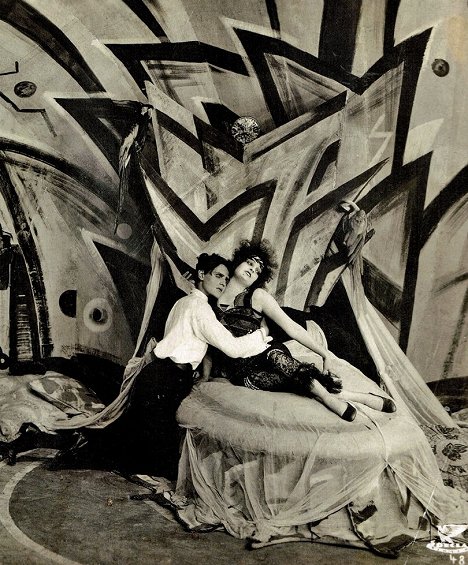
Even without this there are problems with the story that expressionist writers noted even then, let alone now. The character of Genuine is supposed to be a villian who destroys men just for the Hell of it. But considering that she starts as a slave girl who was being passed back and forth and held captive in a cage by the creepy old Guyard she seems more of a victim. Modern audiences should understand that the "Vamp" character was actually a popular stock villain of the 1910's film era. The Vamp was a common character in the early years of film, often played by the likes of Theda Bara, Alla Nazimova or Pola Negri, usually dark haired and wearing elaborate "Eastern" gowns and robes, bejeweled and feathered, chain smoking long filters and fixing her prey with a cold disdainful glare through dark ringed eyes and fluttering lashes. The Vamp characters, so popular to audiences, perhaps showed the hangover of the prudish post-Victorian era and their fear of liberated women and sex in general, particularly amongst poorly educated working class, small town and immigrant audiences. Today however the Vamps seem at best naive and silly and at worst sexist and even misogynistic. Actually some of the more sophisticated artists and intellectuals of the day thought much the same thing and the Vamp character was already going out of style. It would seem that Wiene and Mayer intended the character of Genuine to be a female version of the evil, manipulative Dr. Caligari from the previous film, however since she spends the first part of the film as a victim and the last part professing her guilt she is not much a villain. Unless we are to believe that her repentance at the end was not sincere. Is that why Percy disappears at the end? Did she send him away? Did he sacrifice himself to the mob as The Manservant did? Or did he burst in at the end after her death in a part that has been lost? Does he awaken at the end and did that part also get lost? At any rate the central theme of "Caligari" was one of the danger of a manipulative leader who leads his followers to their doom is muted if that leader is not really evil.
Other Expressionistic writers also complained that the film lacked the basic themes of the genre; alienation, confronting emotional depth through dreams and the very German conflicts of obedience to authority and self expression. The question of Percy's dream is actually important here, especially in the light of what happened in the previous film "The Cabinet Of Dr Caligari". As anyone who has seen "Caligari" will know the entire film is presented as a dream had by the narrator. This was not in the original screenplay written by Carl Mayer and Hans Janowitz but was added by Fritz Lang who was originally supposed to direct the film until he dropped out and was replaced by Robert Wiene. Wiene continued on with Lang's notes over Mayer and Janowitz's objections. Lang and Wiene's assumptions were at least partly the belief that the film would not be accepted by the studio or the public without an ending that was more upbeat. Many writers then and now have criticized for this as undermines the message of the film as being a warning about the evils of authority figures who demand unquestioning obedience from their followers. This was certainly Mayer's main complaint. However some writers have noted that the framing sequences in "Caligari" actually use the same bizarre sets and makeup as the rest of the film's nightmare sequences which in turn undermines the entire "It was all a dream" concept. Was it a dream after all? It's one of the many enigmas of "Caligari". On the other hand in "Genuine" the framing sequence at the start uses a realistic set and makeup that is distinctly at odds with the rest of the film and states up front that the story is a dream which further confuses whatever message the film has, especially since the surviving print seems to end so abruptly.
Those writers (including Mayer) who criticized "Caligari" and "Genuine" for muting the message by making it into a dream inevitably blame Wiene for not understanding the purpose of expressionism. Even setting aside fact that he was working from Fritz Lang's notes with "Caligari" we should consider the fact that after even complaining about the changes made to "Caligari" Mayer quickly worked with Wiene again and he not only wrote this film but once again made it into yet another dream fantasy.

The film would not be remembered for it's plot anyway but for it's look. Weine and set designer Cesare Klein clearly decided to take the nightmare world of "Caligari" to further levels and this time they had the time and budget to do so. However this time the effects were judged by many as not a success. The more elaborate sets of "Genuine" seemed to overwhelm the cast and the exotic costumes were simply a distraction. Where "Caligari" was stark and moody, "Genuine" was too busy for it's own good. Conversely many felt that the flat plywood and canvas sets also lacked lacked depth. The same was also true of "Caligari" but the sheer novelty of the first film had caught the imagination of most viewers, somehow the second time around a similar style now seemed a cliche. Most of the actors fade into the wild backgrounds and they suffer even more from the frequently ridiculous costumes and hairstyles they wear. Fern Andra as Genuine wears a typical "exotic" Vamp costume of the time which contemporary audiences probably felt was not too over-the-top more or less, ditto for the black Manservant's Turkish costume. However Percy's Buster Brown kneepants and schoolboy outfit just look silly and the absurd hairstyles that he and The Barber wear make them look like they wandered over from a Flock Of Seagulls video. I doubt that 1920 audiences felt much different. They have better luck with Guyard; his hunched shoulders, bald head, long tight black jacket, white gloves with black lines on the back and spats over Cuban heeled shoes, he looks like a combination of Dr Caligari and Nosferatu. Similarly Henry, looming tall and dressed in black from head to foot looks imposing enough to standout immediately.
This brings us to the other quality lacking in "Genuine", the acting. In "Caligari" Wiene was blessed to have some of the finest German actors of the age. The brilliant Conrad Veidt was haunting as Cesare and Wener Krause as Dr.Caligari made an iconic villain while Lil Dagover was a definitive Gothic damsel in distress. Besides the leads each of the other players (who also included Rudolph Klein-Rogge, who would go on to appear in classics like "Dr Mabuse", "Spies", "Die Nibelungen" and "Metropolis") gave sharply etched characters that easily overcame the limitations of silence and stood out from as rather than fading into the weird sets and costumes. In Genuine the only holdover from "Caligari" was Hans Heinz Von Twardowski, who had played the doomed Alan in the earlier film and now played the hapless Florian. This time he seemed simply callow and pathetic and he was given more room to overact in ways that seem more blatant to modern eyes than perhaps at the time. Similarly there is Fern Andra as Genuine. She was actually an American named Vernel Andrews (born 1893) who had started her career as a dancer, circus tighrope walker and trapeze acrobat before moving to Germany where she started a film career as an exotic Theda Bara/Mata Hari type Vamp. However she tends to overact, at any rate she lacks the Vampish menace of a Pola Negri, Alla Nazimova or Theda Bara who had a better understanding of their roles. It is simply never clear exactly why men are supposed to find her so seductive when she merely looks basically attractive but not especially charismatic. Nor does she make a very compelling victim, which given all the terrible things that happen to her is a problem. Although given the contradictions of her character that's may not be entirely her fault. She is simply a stock "Vamp" plot device audiences were expected to accept as irresistible to all men by definition, something they were less likely to do than would have been the case a few years before when Teda Bara was in her heyday.
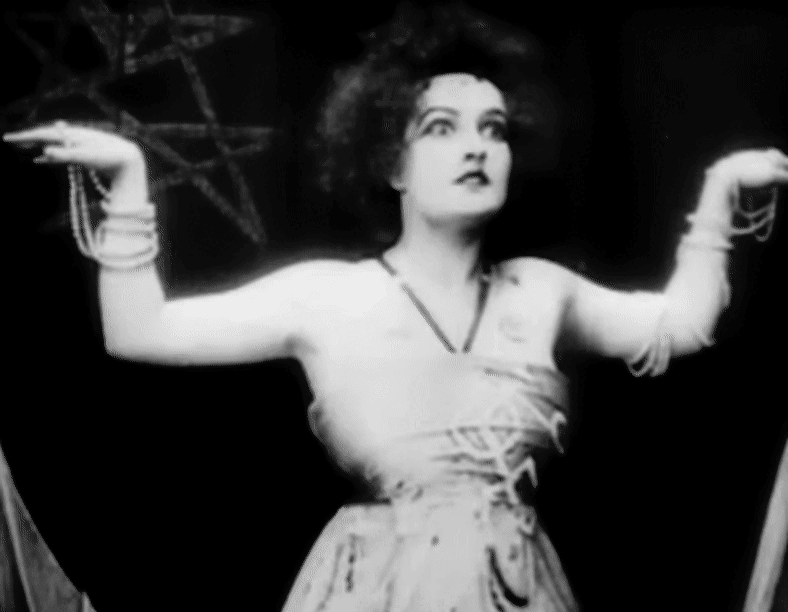
There are a few good performances though; John Gottowt as "Guyard" is creepy enough, although he lacks the menacing presence of Werner Krause stalking through the narrow streets in "Caligari". By contrast Guyard's hunched shoulders and mincing steps would make him a better henchmen and in fact FW Murnau would use him to good effect as the Renfield character in "Nosferatu" two years later. He had already appeared in another classic horror film, the 1913 version of "The Student Of Prague" (with Paul Wegener) and he would later appear in "Waxworks" in 1924 with Conrad Veidt. The unknown actor playing "Henry" has enough stage presence to stand out from the busy sets and dominate Andra in their scene together and he would actually have made an excellent villain. It's too bad he gets so little screen time and we know nothing about him. Louis Brody the black actor playing the Manservant has the presence to be serviceable enough in the role. As an aside it is worth noting the irony that European films of the 1920's usually used actual black actors on the rare times they were called for rather than white actors in blackface as in most American films and while they were invariably stock characters and extras they were not used in the sort of demeaning "Sambo" roles either.

GENUINE IN THE SLAVE MARKET
Despite it's flaws "Genuine" is still worth seeing for any fan of Expressionism as pure example of the genre, and the sets, while at times a little too busy for their own good, are still eye-catching, especially to modern eyes which rarely if ever see such a riot of out of control design. The current film's short forty minute run time, while leading to all sorts of plotting problems as stated above, does at least have the bonus of making it easy to sit through, always a consideration with silent films for some.
After "Genuine" Carl Mayer would go on to a respected career as an Expressionist screenwriter with several well regarded films to his credit, including collaborating with FW Murnau on the classic "The Last Laugh" in 1924. Ironically that film had yet another dream sequence tacked on to the end, this time apparently by Murnau himself at the orders of the studio. Cesare Klein would continue his career as a painter and theatre designer.
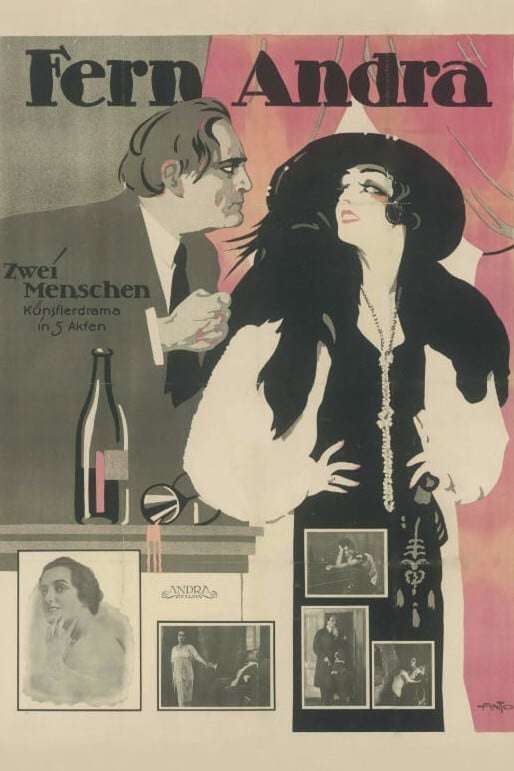
Of the cast Fern Andra would have a suitably dramatic life with successful film career in Germany and some high profile affairs. The same year as "Genuine" was made her current lover, Lothar Von Richtoffen, who happened to be the brother of the actual Red Baron, they were in a plane crash in which Lothar was killed and Fern was widely reported dead but the cosmically lucky Fern survived. She would marry four times, twice to the same guy, American actor Ian Keith. When Hitler came to power she could have probably have continued her career but she left Germany and returned to America where she continued her eccentric career on stage dying in 1974 aged 80.

Hans Twardowski, who was gay, also fled to Hollywood when the Nazis took power where he found work in supporting roles into the War years where he became stereotyped playing Nazi roles including in "Casablanca" along side his old "Caligari" castmate Conrad Veidt. After the war typecasting limited his roles and he turned to the stage dying in 1958.
.jpg)
HANS TWARDOWSKI
John Gottowt would have a much more tragic fate. He was Jewish also had also had to flee Germany after the Nazis took power in 1933, he fled first to Denmark but then moved to Poland (where there was a thriving Yiddish theatre and film scene) where he was captured and murdered by the SS in 1942.
.jpg)
JOHN GOTTOWT
Louis Brody, the black actor who played the hulking loyal manservant, would also have a dramtic life. Born in the then German colonly of Kamerun (now Cameroon) in 1892 and moved to Germany before World War One and worked as a boxer, singer and actor with a long film film career. He was also a political activist as one of the founding members of Liga zur Verteidigung der Negerrasse, a civil rights organization for the Black citizens of Germany's African colonies allied with the Communist Party. Not surprisingly when the Nazis took power they banned the League but somehow Brody escaped arrest and was allowed to continue his career which he did through the war years and afterwards dying in 1951.
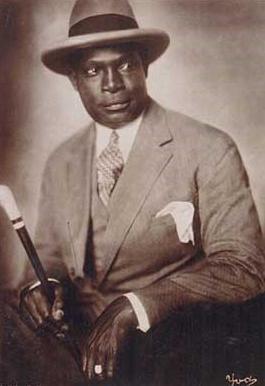
LOUIS BRODY
As for Robert Wiene; after the relative failure of "Genuine" he did not give up on Expressionism as a genre. In 1923 he traveled to the USSR, where his work was highly regarded, to do an adaptation of Dostoyevsky's "Crime And Punishment" (sometimes found under the alternative title "Rashkolinov") using an all Russian cast. He was still wedded to the pure Expressionist style he had laid down in "Caligari" but he had listened to the criticism of "Genuine" and taken note of Paul Wegener's film "Der Golem". This time he made the sets more three dimensional which gave them more depth while toning down the outlandish costumes. The result was a better balance of fantasy and reality which got the film better reviews, especially in Russia. Although the film is not well known today and rarely seen, copies can still be occasionally found on DVD. In 1924 he reunited with "Caligari's" Conrad Veidt for "The Hands Of Orlock" (AKA "Orlock's Hands") an influential horror classic which was later remade in an inferior sound version. "Orlock" is currently available on DVD from Criterion and is highly recommended. After that he settled back into mainstream work like "The Duchess Of The Folies Bergeres". For this he has been roundly dismissed as little more than a hack, although few people criticism Fritz Lang for his similar mercenary films and lapses in taste. After Hitler came to power the Nazi's banned Wiene's three Expressionist films and he quickly fled the country to the USA where he was considering a sound remake of "Caligari" when he died in 1938. There would in fact be a B Movie quickee remake of Caligari in 1962 which has been richly forgotten. There would also be an interesting shot by shot sound American remake in 2005 which is currently available on DVD and is worth checking out.

ROBERT WIENE
There would in fact be a B Movie quickee remake of Caligari in 1962 which has been richly forgotten. There would also be an interesting shot by shot sound B&W American remake in 2005 which also replicates the sets of the original which is currently available on DVD and is worth checking out.
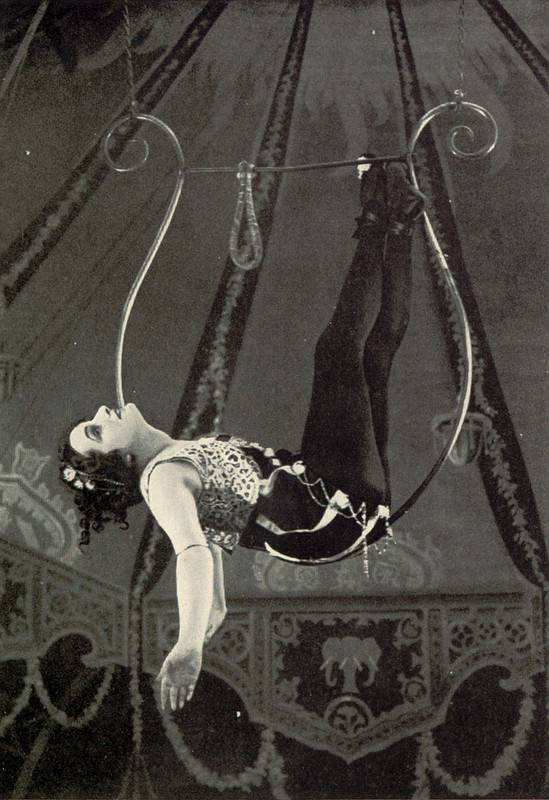

Excellent and in depth review, well done. Just one thing, in your synopsis there are some sections where you refer to Florian as Percy. It is, of course, Florian who is the Barber's nephew and the first to be seduced by genuine, and compelled to kill himself. Percy arrives on the scene later. Mind you, given this disjoined narrative of this abridged cut, confusion is understandable.
ReplyDelete